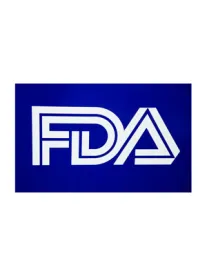On February 23, the US Food and Drug Administration (FDA) issued a guidance document titled Guidance for Industry: Nutrient Content Claims; Alpha-Linolenic Acid (ALA), Eicosapentaenoic Acid (EPA), and Docosahexaenoic Acid (DHA) Omega-3 Fatty Acids; Small Entity Compliance Guide1 (Guidance). The Guidance was issued pursuant to the Final Rule regarding omega-3 nutrient content claims issued in 2014, which took effect on January 1, 2016.2 Thus, this Guidance was issued after the compliance date. The Final Rule was issued in response to three notifications from seafood and fish oil producers that wished to make nutrient content claims for ALA, DHA, and EPA on their product labels. Specifically, two of the producers manufactured fish oil–based dietary supplements.
The Guidance clarifies food producers’ responsibilities with regard to ALA, EPA, and DHA nutrient content claims and prohibits certain claims. The prohibition on certain claims has wide implications for foods that previously made DHA, EPA, and certain ALA claims. Possible products affected include seafood, eggs, pasta, dairy products, juices, baby food, cooking oil, certain meats, and fat-based spreads.
Nutrient Content Claims Generally
Nutrient content claims are labeling claims that characterize the level of a nutrient in a food. The Food, Drug, and Cosmetic Act (FD&C Act) requires that companies notify FDA of a nutrient content claim at least 120 days before a food that bears the claim is introduced into interstate commerce. Among other requirements, nutrient content claims must 1) be based on an authoritative statement that identifies a nutrient level to which the claims refer and 2) be stated in a manner in which the public can understand the relative significance of the nutrient in the context of daily diet. In the Final Rule, FDA prohibited the claims set forth in the notifications for DHA and EPA and some ALA claims because they did not meet these requirements.
Prohibited DHA and EPA Claims
The DHA and EPA claims were prohibited because they did not meet the first requirement of a nutrient claim, i.e., they were not based on an authoritative statement that identified a nutrient level to which the claims refer.
Prohibited ALA Claims
Similarly, FDA prohibited claims for ALA because they did not meet the second requirement for a nutrient content claim, i.e., they were not stated in a manner in which the public can understand the relative significance of the nutrient in the context of daily diet. Specifically, the ALA nutrient content claims relied on two different approaches to set a reference value for ALA: the population-weighed approach and the population-coverage approach.
Allowable Claims
FDA stated in the Guidance that it will not take regulatory action against nutrient content claims for ALA that are based on the population-coverage approach. These include “high,” “good source,” and “more” claims. Like all nutrient content claims, these claims must comply with all other requirements under the FD&C Act and FDA regulations.



 />i
/>i

